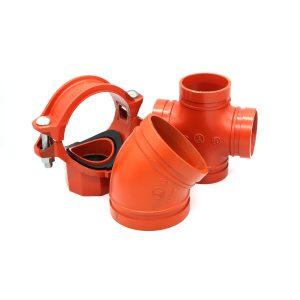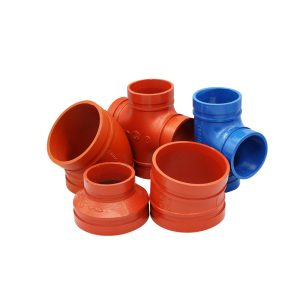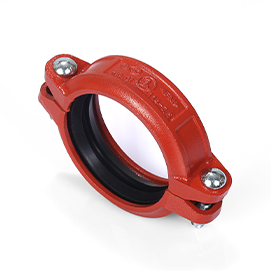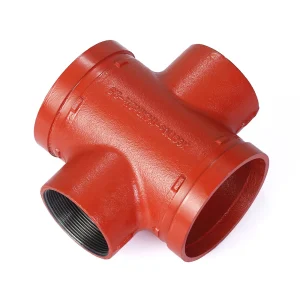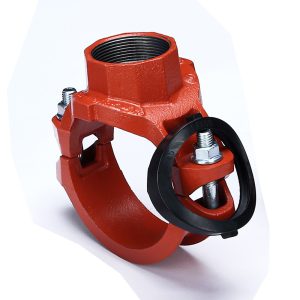
Piping systems need to adapt. Whether you’re handling a big HVAC setup in a skyscraper or a fire sprinkler network in a factory, quick changes or expansions can save you time, cash, and stress. That’s where mechanical tees come in. These small but mighty fittings make a big difference. They let you tweak or grow your system with ease. In this post, we’ll explore why mechanical tees are a game-changer, look at their real-world uses, and show how they make projects smoother with practical benefits.
What Are Mechanical Tees and Why Do They Matter?
Mechanical tees are clever pipe fittings. They create branch connections without the hassle of welding or cutting. Unlike old-school welded tees, these use a grooved or threaded setup to join pipes securely and fast. You’ll find them in standard, threaded, or U-bolt styles, each suited for specific jobs in fields like HVAC, fire protection, or industrial piping.
Why are they a big deal? Picture this: you’re updating an aging building’s fire sprinklers. You need to add a branch for a new section. Cutting pipes, welding a tee, and testing everything could take days. Mechanical tees? They let you clamp on a connection in hours. No torches, no fuss. That’s the flexibility advantage—less downtime, lower costs, and a system ready to grow with you.
Key Features of Mechanical Tees
Simple to Install: Just a wrench and some skill—no welding or fancy tools.
Versatile: Sizes range from 1” to 10” (DN25 to DN250) for all kinds of pipes.
Tough: Built from strong ductile iron (ASTM A536 or A395), they handle -20°F to +180°F (-29°C to +82°C).
Leak-Free: Carefully crafted grooves ensure a tight, dependable seal.
The Flexibility Advantage in Action
Mechanical tees shine because they make system changes and growth straightforward. Let’s break down how they work in different situations.
1. Streamlined System Modifications
Piping systems don’t stay the same. Buildings get remodeled. Factories shift processes. Fire codes change. Adjusting a system for these updates can be a pain—unless you’ve got mechanical tees.
Say a hospital is upgrading its HVAC to boost air quality. Shutting down for days isn’t an option. With mechanical tees, workers can add new branch lines to existing ducts in no time. How? Clamp the tee on, bolt it tight, and connect the new pipe. No welding, no fire risks. Just a quick, clean fix.
I heard about a Beijing commercial complex that used mechanical tees during a tenant overhaul. Reworking the plumbing could’ve taken a week with old methods. They wrapped it up in two days, saving a ton on labor.
2. Effortless System Expansions
Need to expand a system? Maybe a new building wing needs plumbing, or extra sprinklers are required. Mechanical tees make it easy. Their grooved design means fast setup, even in cramped spots or high-pressure systems.
Think of a Guangzhou factory adding a new production line. The cooling system needs more branches for new machines. Mechanical tees let the crew add those lines without draining the system or stopping work. The factory keeps running, and the expansion stays on track.
3. Saving Time and Money
In construction or maintenance, every hour counts. Mechanical tees cut both time and costs. A 2023 industry report showed grooved systems, like those with mechanical tees, slashed installation time by up to 50% compared to welding. That means lower labor bills and faster projects.
Here’s a quick look:
| Method | Setup Time | Labor Cost | Needs Hot Work? |
| Welded Tees | 8-12 hours | High | Yes |
| Mechanical Tees | 2-4 hours | Low | No |
The numbers don’t lie. Mechanical tees are a smart, budget-friendly choice.
Applications Across Industries
Mechanical tees aren’t just for one job. They work across many fields. Here’s where they shine:
HVAC: Adding vents or rerouting ducts in offices or malls.
Fire Protection: Extending sprinkler lines for new safety rules.
Industrial Piping: Connecting lines for cooling or process fluids in plants.
Water Supply: Updating city water lines for new neighborhoods.
Take the Suzhou Subway Station. With 350 km of lines and 276 stations, it used mechanical tees for plumbing and fire systems. Their quick setup helped hit tight deadlines.
Why Choose Mechanical Tees Over Traditional Fittings?
You might ask: why not stick with welded tees? The flexibility advantage and practical perks make the case for mechanical tees.
No Hot Work, No Stress
Welding needs permits, fire watches, and skilled workers. Mechanical tees skip all that. You just need basic tools. This cuts safety risks and simplifies the job. In places like hospitals or schools, where flames are a no-go, this is huge.
Ready for Future Changes
Buildings change over time. Mechanical tees are easy to take apart and reconfigure. Planning a multi-phase expansion? They’re a lifesaver. You can add or shift branches without ripping up the system.
Built to Last
Don’t let the simple setup fool you. These tees are tough. Made from high-grade ductile iron and meeting standards like ISO6182 and AWWA C606, they handle rough conditions. High-pressure fire systems? Corrosive factory settings? They’ve got it covered.
A Word on Standards and Quality
Quality is critical in piping. Mechanical tees meet strict global standards for reliability. They align with:
ISO6182: The worldwide benchmark for grooved fittings.
AWWA C606: North America’s standard for grooved joints.
GB 5135.11: China’s rule for fire protection fittings.
These aren’t just formalities. They ensure every tee can handle your system’s demands—pressure, temperature, corrosion, you name it.
Vicast: Your Trusted Mechanical Tee Supplier
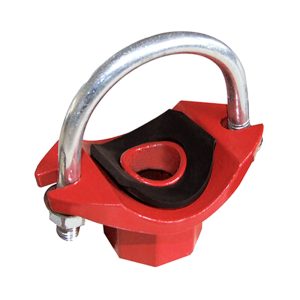
When picking mechanical tees, Vicast is a standout. Founded in 1982, they’ve got over 40 years of experience making top-notch grooved fittings. Their 1.4 million square meter factory and 350+ engineers deliver products built for precision and toughness.
Vicast offers mechanical tees in three styles: standard (XGQT15), threaded (XGQT15S), and U-bolt (XGQT15U). Each one gets multiple quality checks to meet global standards, ensuring no leaks and long-lasting performance. From the National Centre for the Performing Arts to the Suzhou Subway Station, Vicast’s fittings have proven themselves in big projects.
What makes Vicast special? They’re all about innovation and support. With over 200 patents and a strong R&D team, they keep improving their products. Plus, their 24-hour customer service means you get help whenever you need it.
Conclusion
Mechanical tees are more than fittings—they’re a smarter way to build and maintain piping systems. They make modifications and expansions quick, affordable, and adaptable. Whether you’re upgrading HVAC, adding sprinkler lines, or constructing a new plant, mechanical tees deliver the flexibility advantage to keep your project moving. With a reliable partner like Vicast, you’re getting not just a product but a trusted ally for better, more efficient systems.
FAQs
How do mechanical tees simplify system modifications?
They let you add branch connections fast—no welding or cutting needed. You clamp them onto existing pipes, which cuts downtime and makes modifications smooth and easy.
Are mechanical tees good for expansions in tight spaces?
Yes! Their compact design and easy setup make them perfect for cramped areas, like retrofitted buildings, letting you expand systems without a hitch.
Can mechanical tees handle high-pressure systems?
Definitely. Made from tough ductile iron and built to standards like ISO6182, they’re designed for high pressure and extreme temperatures, ensuring solid performance.
Which industries get the most from the flexibility advantage?
HVAC, fire protection, industrial piping, and water supply benefit big time. Mechanical tees make modifications and expansions faster and cheaper in these fields.
How do I pick the right mechanical tee for my project?
Look at your pipe size and system needs. Standard tees (like Vicast’s XGQT15) suit larger systems. U-bolt tees (XGQT15U) are great for smaller pipes. Talk to your supplier for tailored advice.

